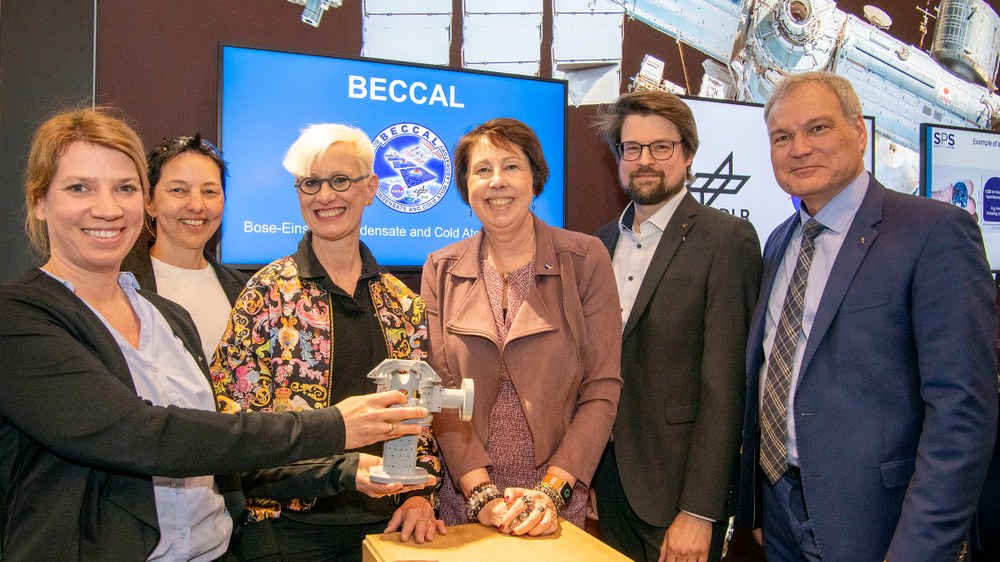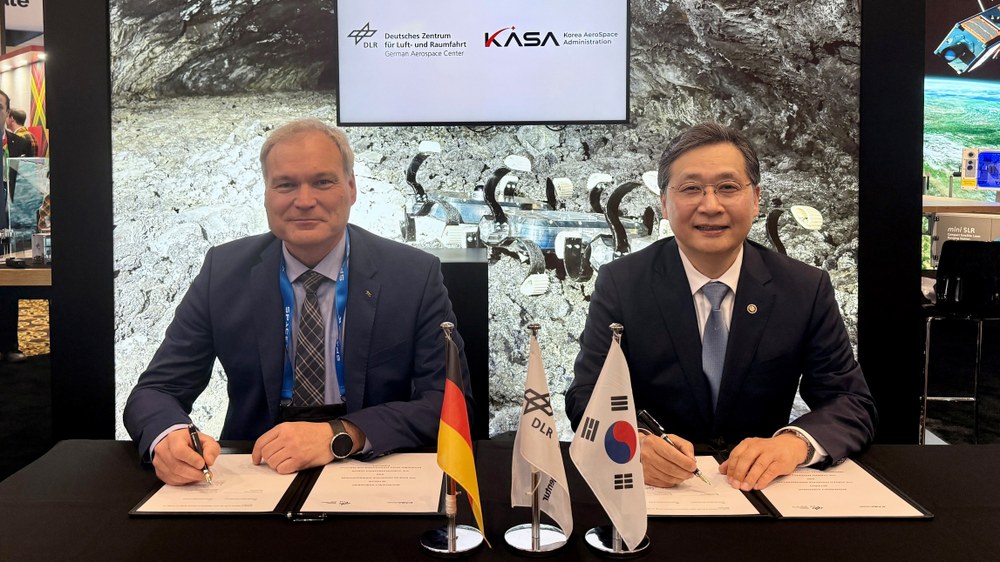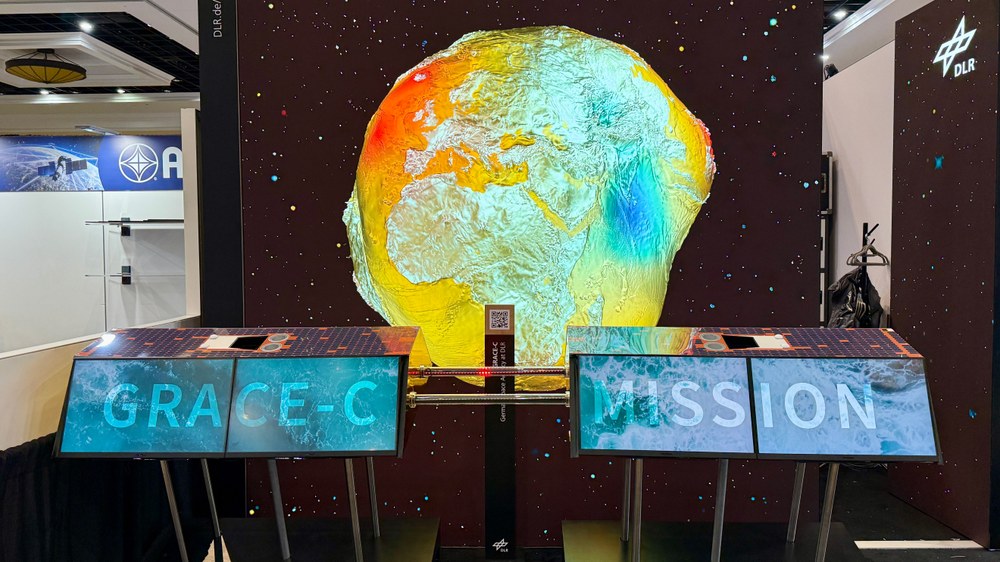DLR at the Space Symposium 2025

Chuck Bigger


- The Space Symposium is a forum for extensive exchange with international space collaborators.
- At this year's event, a framework agreement was signed with South Korea's national space agency.
- An ongoing collaboration with NASA on cold atom research aboard the International Space Station was also reaffirmed.
- Focus: Space
The 40th Space Symposium – the world's largest international space conference – is taking place from 7 to 10 April 2025 in Colorado Springs. Thousands of participants from space research, industry and military space programmes are gathering on site. "For many years, the Space Symposium has provided a valuable opportunity to deepen the close relationship Germany enjoys with its US and international space collaborators," said Anke Kaysser-Pyzalla, Chair of the German Aerospace Center (Deutsches Zentrum für Luft- und Raumfahrt; DLR) Executive Board.
During the event, the German Space Agency at DLR and the Korea AeroSpace Administration (KASA) signed a framework agreement to strengthen future exchange and collaboration. "Asia is a major and growing space market and German companies have a strong reputation there. Politically, South Korea is an important collaborator in the region with an ambitious space programme," says Walther Pelzer, DLR Executive Board Member and Director General of the German Space Agency at DLR. KASA, founded in May 2024, aims to advancing space science and strengthen South Korea’s position in the global space race.
One major joint project between NASA and DLR is the Bose-Einstein Condensate and Cold Atom Laboratory (BECCAL), which will conduct cold atom research aboard the International Space Station ISS. Cold atoms exist just above absolute zero – approximately minus 273 degrees Celsius – and their unique properties enable new insights into quantum physics, helping us better understand the Universe. BECCAL is scheduled to launch to the ISS in 2027. At the Space Symposium, representatives from both sides reaffirmed the importance of this collaboration and the joint research being conducted aboard the ISS.
In addition to BECCAL, several other DLR research projects were presented at the DLR exhibition stand, including:
GRACE-C mission
GRACE-C (Gravity Recovery and Climate Experiment – Continuity) is the successor to the GRACE and GRACE Follow-On missions, conducted jointly by NASA and DLR since 2002. Scheduled for launch in 2028, the GRACE-C mission will use a pair of satellites to map Earth's gravitational field. The data will enable researchers to monitor Earth's water cycle and water resource changes and to gather essential parameters for climate change analysis.
SpacePatch System
The SpacePatch System is a software application designed to assess astronaut' health and fitness in real time using sensors worn on the body. This technology supports mission planning and execution, both on the ISS and future lunar missions. The system is co-funded by the German Space Agency at DLR and developed by the DLR Institute of Aerospace Medicine, the Hamburg University of Technology, Bielefeld University and the University of Erlangen.
Scout Rover
Scout is a robust planetary exploration rover that uses a novel, flexible spoke-wheel and deformable spine design to traverse obstacles. Each wheel has a single fully rotatable drive. Together with its adaptive components, Scout enables energy-efficient, dynamic and highly resilient movement across even the toughest terrain. The rover's advanced control system was developed by the DLR Institute of Robotics and Mechatronics for exploring lava tubes in space – areas traditional rovers struggle to reach due to steep or rugged crater walls. Lava tubes on the Moon or Mars are thought to have formed from ancient volcanic eruptions. The system may also prove useful on Earth, for example in search-and-rescue missions or agricultural robotics.
DEAR solar array for small satellites
The deployable, membrane-based 100-watt DEAR solar array for small satellites was developed with funding from ESA's ARTES Advanced Technology Programme. The array fits inside a 1 Unit container (10 x 10 x 10 centimetres) and unfolds to deliver high power density for its volume. The project was led by the DLR Institute of Space Systems in cooperation with Polish partner Astronika, which supplies the deployable masts, and German partner AZUR Space Power GmbH, which provides the solar cells. The DEAR solar array will undergo flight testing as part of DLR's PLUTO-1 mission.
